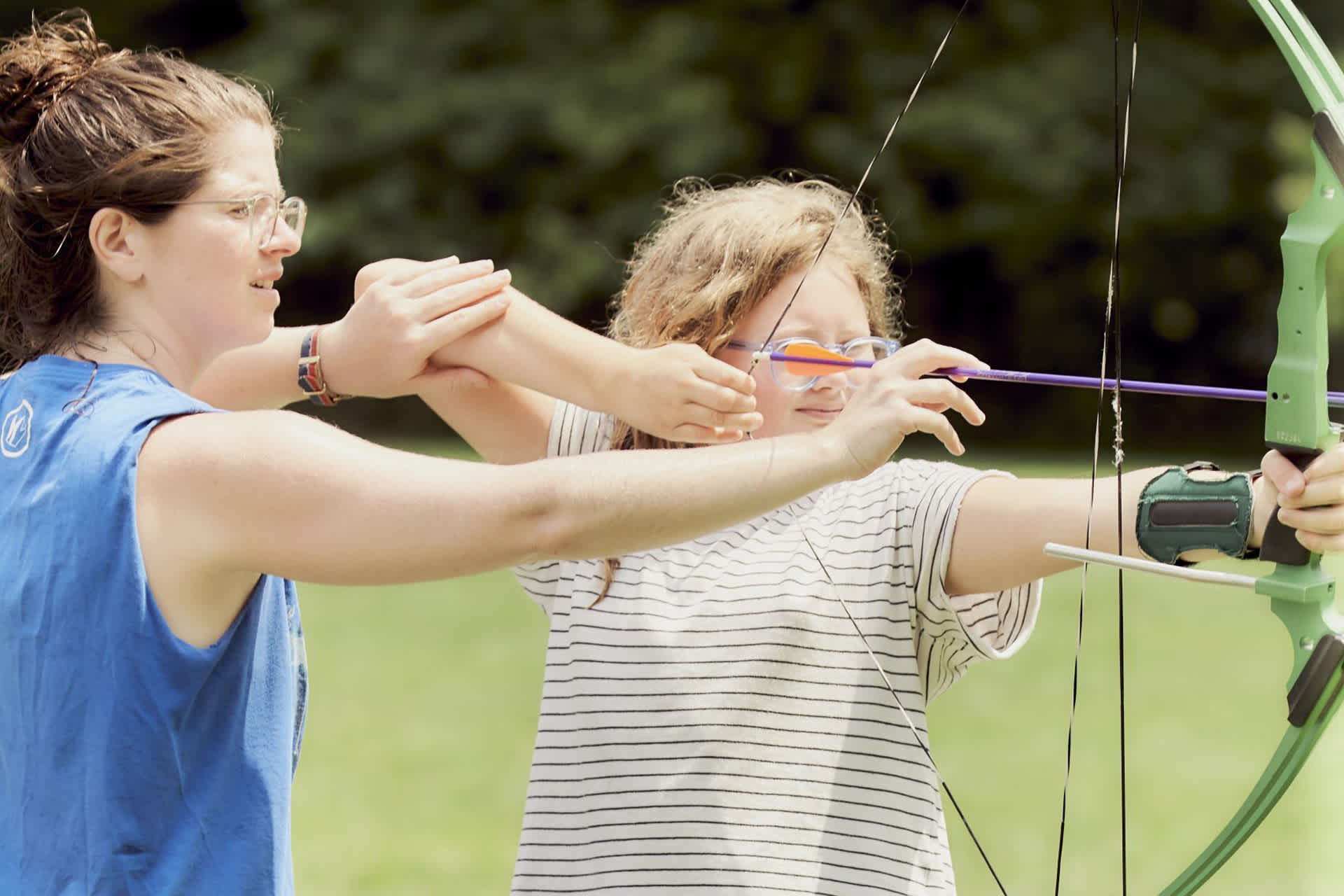A Day at Work: Activity Leaders

Working at a nature camp takes a commitment to campers’ safety and well-being. Your Hot Job spoke with two activity leaders—Eileen McCafferty and Jason Samuel—at the Nature Place, a summer camp in Chestnut Ridge, New York.
Getting Ready
Eileen McCafferty, better known as Beans, is an archery activity leader. Each morning, she makes a five-minute drive to camp, arriving around 8:30. Then it’s time to prep the field. First, she puts up a tent for shade. Then she sets up a water cooler for bottle refills. She puts five target stands in a row. And finally, she hangs a bow and stows arrows for each archer. “I check my equipment at the beginning and end of each day,” McCafferty says. “Poorly maintained equipment can cause injury to my campers, so I take that seriously.”
Jason Samuel is the camp’s director. He’s also an activity leader for the rope challenge courses. Like McCafferty, Samuel starts each day by inspecting equipment. He makes sure every rope and platform is in good working order, and he scrutinizes every carabiner, harness, and helmet. For Samuels, it’s important to have zero distractions. “As a facilitator,” he says, “your focus is also a part of the safety—making sure that you are mentally there.”
Morning Routine
During the 9:15 session, Samuel first conducts stretching and team-building games. The games strengthen campers’ communication and critical-thinking skills. There’s a low ropes course that’s only four or five inches off the ground. Campers “climb” it parallel to the ground.
Kids make decisions about how to complete the course. The goal is to figure out how to solve a problem as a team. “Everyone is heard, everyone is represented,” says Samuel. “It’s a laboratory for creating good adults for the future.”
McCafferty begins her activity with a reminder about range rules. Archers who aren’t in the firing line must remain quiet so those shooting can concentrate. She demonstrates each part of the action that archers will take. Then works with individual campers to improve their stance, aim, and shooting.
Lunchtime
During the midday break, McCafferty writes notes for the following week’s lesson plans. She also resets the range for the next group of campers. If there’s time, she’ll visit with other activity leaders.
Samuel enjoys chatting with colleagues to give his brain a break. But as camp director, he also needs to check in with the team. He wants to find out what’s working with campers, and what might need a tweak.
An Afternoon at Camp
At around 1:30, Samuel leads a high ropes course. He makes sure each camper is properly harnessed and ready for the activity, which tests their focus, balance, and strength. But Samuel says empathy on his part is also crucial: Campers are now out of their comfort zone. “You’re managing being an emotional counselor at the same time as giving a lot of confidence in the physical work,” he says.

Meanwhile, McCafferty is busy changing up the challenges on the archery range. If archers were playing tic-tac-toe on the targets earlier in the day, they might now be popping paint balloons, or trying to knock objects off a balance beam using rubber-tipped arrows. During the final week of camp, McCafferty says, “we shoot at normal target faces again so campers can see their progress.”
Wrapping Up
At about 3 p.m., McCafferty starts locking up all the archery equipment in storage sheds. For her, it’s also a time to reflect on the joy she feels watching campers get better each day. “Seeing them overcome the challenges of the sport is extremely fulfilling,” she says.
Samuel ends the afternoon with a debrief. He asks campers about the high and low points of their day. This helps get them comfortable on the ropes courses sooner, he says. “The lightbulb moment, when campers realize ‘Oh, I can do this’: It’s the most gratifying experience in the world.”

